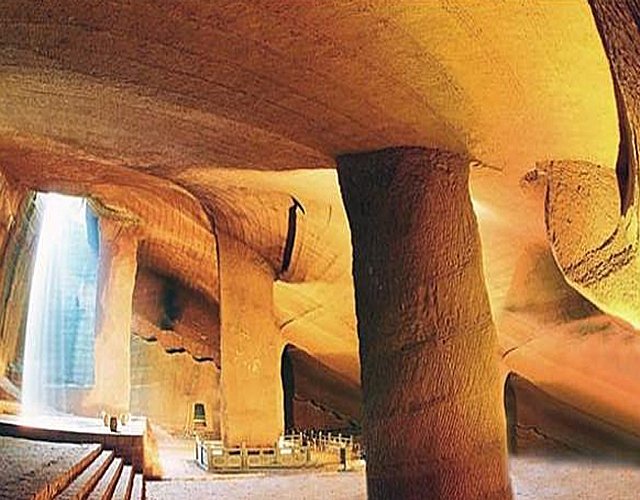Underground Man-Made Longyou Grottoes Remain An Ancient Unsolved Mystery
A. Sutherland - AncientPages.com - Fascinating and mysterious underground Longyou Grottoes (also known as Longyou Caves) must have been some kind of an extraordinary man-made project of the ancient skilled builders, who created them more than 2000 years ago.
They have long been the subject of great fascination for both scholars and laymen alike but until now, no one was able to solve the mystery of their creation.
Researchers from several countries around the world visited and investigated the Longyou Grottoes, which are believed to date to a period before the creation of the Qin Dynasty in 212 BCE
Description Of The Caves
The caves are very large considering their man-made origin: the average floor area of each cave is over a 1,000 square meters(11,000 sq ft), with heights of up to 30 meters(98 ft), and the total area covered is in excess of 30,000 square meters (320,000 sq ft).
The ceiling, wall and pillar surfaces are all finished in the same manner, as a series of parallel bands or courses about 60 cm wide containing parallel chiselling marks set at an angle of about 60° to the axis of the course. They have maintained their structural integrity and appear not to interconnect with each other.
The areas of grottoes differ from 1,000 to 3,000 square meters. Each grotto makes a downward vertical extension from the rectangular hole with a height of approximately 30 meters.
The Longyou Grottoes are located at Phoenix Hill, 3 km north from Longyou County Quzhou prefecture, Zhejiang province, China.
Anonymous Builders, Unknown Purpose Of Construction
Unfortunately, there are no historical records of their construction, no construction plans or methods of their design have ever been found.
Why have these large artificial sandstone structures been able to maintain the stability for so long? Were they constructed by ancient Chinese or an unknown very advanced civilization present in the region at that time?
Decorated With Lines And Symbols
The walls, roof, and stone columns of each of the grottoes are decorated with chisel marks - lines and symbols - probably deliberately left by the ancients.
Do these symbols have only ornamental purpose or are there a hidden message within the walls that has yet to be deciphered?
Among twenty-four discovered grottoes - all of which were carved by hand - there are seven that are decorated with patterns clearly resembling the seven stars of the Big Dipper.
None of the caves are connected with each other, but many of them share thin walls. As Yang Hongxun, an expert at the Archaeological Institute of Chinese Academy of Social Sciences, explained "at the bottom of each cave, the ancient builders wouldn't be able to see what the others were doing in the next grotto. But the inside of each cave had to be parallel with that of the other, or else the wall would be holed through.
See also:
Unanswered Questions Related To The Mysterious Huashan Caves
Ancient Secrets Hidden In The Piyang Caves - Mysterious Sacred Caves Of Tibet
Thus the measuring apparatus should have been very advanced. There must have been some layout about the sizes, locations, and the distances between the caves beforehand."
Many questions regarding the Longyou masterwork have never been answered. Where was the excavated rock from the grottoes transported?
How many workers were involved in the creation of these extremely sophisticated grottoes?
The four caves, for example, cover an average floor surface of 1,200 square meters, so each of the caves should have involved the excavation of 36,000 cubic meters of stone. Since a total of 24 such caves have already been found in Shiyanbei Village, the overall excavation would be 900,000 cubic meters.
Could Ancient Chinese Build Them?
According to an estimation: if one man can dig and carry out 0.5 cubic meters of stone every day, then building these 24 caves would require 1,000 strong men to work 24 hours a day, seven days a week for about 5 years. However, this is only a conservative estimation, because the deeper the cave goes, the more difficult in excavation and transportation will be.'
One theory suggests that large rock grottoes fully filled with water can be stable and integrate for a thousand years. Other issues must wait for answers.
Modern rock mechanics and rock engineering are younger than 100 years and have never contributed to this kind of very advanced constructions.
More on rock mechanics and rock engineering.
Written by – A. Sutherland - AncientPages.com Senior Staff Writer
Copyright © AncientPages.com All rights reserved. This material may not be published, broadcast, rewritten or redistributed in whole or part without the express written permission of AncientPages.com
More From Ancient Pages
-
 Krampus Celebrations Are Becoming Dangerous – Historian Warns
Ancient Traditions And Customs | Dec 10, 2019
Krampus Celebrations Are Becoming Dangerous – Historian Warns
Ancient Traditions And Customs | Dec 10, 2019 -
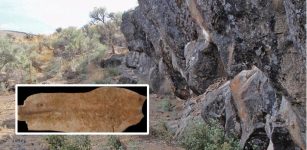 18,000-Year-Old Relics Discovered In Oregon – Oldest Home In North America?
Archaeology | Jul 12, 2023
18,000-Year-Old Relics Discovered In Oregon – Oldest Home In North America?
Archaeology | Jul 12, 2023 -
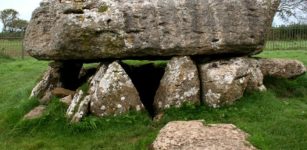 Din Lligwy: Prehistoric Celtic Settlement Of Anglesey, Wales
Featured Stories | Dec 3, 2022
Din Lligwy: Prehistoric Celtic Settlement Of Anglesey, Wales
Featured Stories | Dec 3, 2022 -
 Struggle To Get Mail On Time Has Lasted More Than 5,000 Years – Part 2
Featured Stories | Jul 31, 2017
Struggle To Get Mail On Time Has Lasted More Than 5,000 Years – Part 2
Featured Stories | Jul 31, 2017 -
 3D Scan Will Uncover Secrets Of The Magnificent Vindelev Gold Treasure
Archaeology | Oct 25, 2023
3D Scan Will Uncover Secrets Of The Magnificent Vindelev Gold Treasure
Archaeology | Oct 25, 2023 -
 Old Royal Crime – Dark Riddle Of Young Princes In The Tower Of London
Featured Stories | Jun 14, 2020
Old Royal Crime – Dark Riddle Of Young Princes In The Tower Of London
Featured Stories | Jun 14, 2020 -
 Hulagu Khan Destroyed Thousands Of Priceless Ancient Books Kept In The House Of Wisdom In Baghdad
Ancient History Facts | Jun 21, 2018
Hulagu Khan Destroyed Thousands Of Priceless Ancient Books Kept In The House Of Wisdom In Baghdad
Ancient History Facts | Jun 21, 2018 -
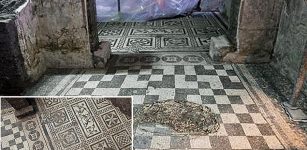 Ancient Roman ‘Commander House’ Discovered In Rome
Archaeology | Mar 5, 2018
Ancient Roman ‘Commander House’ Discovered In Rome
Archaeology | Mar 5, 2018 -
 Unlocking The Secrets Of The Ancient Coastal Maya
Archaeology | Jul 8, 2022
Unlocking The Secrets Of The Ancient Coastal Maya
Archaeology | Jul 8, 2022 -
 On This Day In History: Charlemagne King Of The Franks And Emperor Of The Holy Roman Empire Born – On April 2, 742
News | Apr 2, 2017
On This Day In History: Charlemagne King Of The Franks And Emperor Of The Holy Roman Empire Born – On April 2, 742
News | Apr 2, 2017 -
 Controversial Ruler Tsar Boris Godunov’s Exact Date Of Birth Determined By Scientists
Archaeology | Aug 31, 2021
Controversial Ruler Tsar Boris Godunov’s Exact Date Of Birth Determined By Scientists
Archaeology | Aug 31, 2021 -
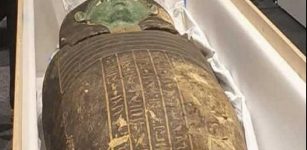 Egypt Recovers Ancient Wooden Coffin From Houston Museum In The US
Archaeology | Oct 4, 2022
Egypt Recovers Ancient Wooden Coffin From Houston Museum In The US
Archaeology | Oct 4, 2022 -
 Ancient Inscriptions Of Babylonian King Nabonidus Discovered In Saudi Arabia
Archaeology | Jul 14, 2021
Ancient Inscriptions Of Babylonian King Nabonidus Discovered In Saudi Arabia
Archaeology | Jul 14, 2021 -
 ‘Giants’ Discovered In Ancient Grave In China
Archaeology | Jul 6, 2017
‘Giants’ Discovered In Ancient Grave In China
Archaeology | Jul 6, 2017 -
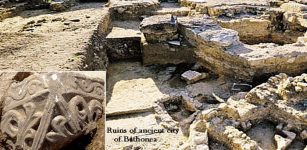 Excavations In Ancient City Of Bathonea Reveal Traces Of Viking Settlement
Archaeology | Aug 27, 2020
Excavations In Ancient City Of Bathonea Reveal Traces Of Viking Settlement
Archaeology | Aug 27, 2020 -
 Scientists Say Dinosaurs Could Be The Reason Humans Can’t Live For 200 Years
Featured Stories | Jan 8, 2024
Scientists Say Dinosaurs Could Be The Reason Humans Can’t Live For 200 Years
Featured Stories | Jan 8, 2024 -
 Ancient DNA Reveals How People Migrated During The Roman Empire
DNA | Feb 1, 2024
Ancient DNA Reveals How People Migrated During The Roman Empire
DNA | Feb 1, 2024 -
 Sokar – Patron Deity Of Ancient Necropolis Of Memphis In Lower Egypt
Egyptian Mythology | Feb 19, 2019
Sokar – Patron Deity Of Ancient Necropolis Of Memphis In Lower Egypt
Egyptian Mythology | Feb 19, 2019 -
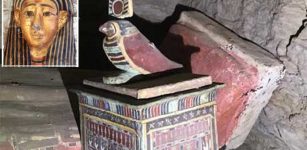 Huge Number Of Intact, Painted Coffins In Shafts Of Egypt’s Saqqara Necropolis
Archaeology | Nov 13, 2020
Huge Number Of Intact, Painted Coffins In Shafts Of Egypt’s Saqqara Necropolis
Archaeology | Nov 13, 2020 -
 Tomb Of Celtic Prince Has Been Unearthed In France
Archaeology | Mar 5, 2015
Tomb Of Celtic Prince Has Been Unearthed In France
Archaeology | Mar 5, 2015

